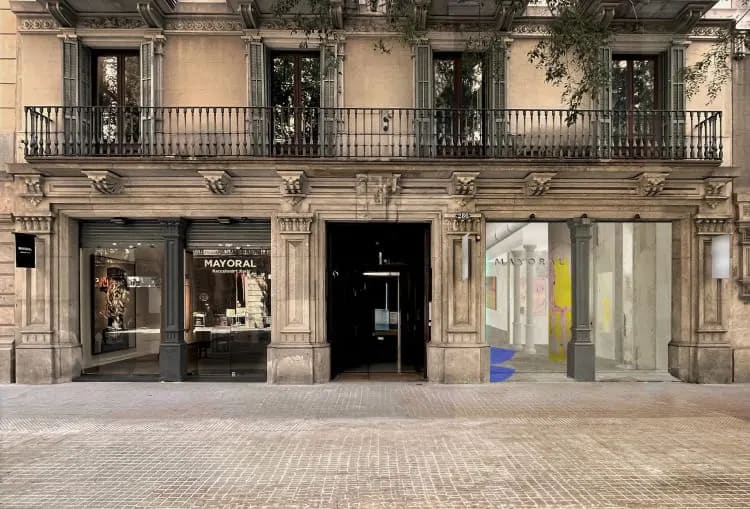The continuous alternation of isms gave way to a plurality of simultaneous tendencies. The separation was destroyed between figure and abstraction, between high and low culture, between the local and the universal. The contribution of younger, more individual, radical and emerging art was equal in importance and innovative value to the historical avant-garde, which was reread and accepted as classical and renewing. The centrality of art in the main capitals (Paris and New York) proliferated in numerous peripherals centres. The European mosaic offered several national models on the offensive at the same time (German neo-Expressionism, Italian Transavantgarde, new English sculpture, new French Objectuality, etc.). The popular aesthetic origins of the underground converged and coincided with the return and the vindication of painting, and the formal styles of the past joined together in collage with new images. Art criticism, shaped in universities, played a role in the curation of exhibitions and in dissemination through the media. The old art market was renewed and participated actively in the great mutation that integrated artists from the first and from the second avant-garde, the dissidents from conceptual art and the emerging young artists, and active, institutional and private collectors appeared. Banks fostered the social dissemination of contemporary art and heritage as an economic value. Contemporary art centres were planned which contemplated the historical past from the present, and the local scene was complemented with the international. In short, a new cycle was born, given the generic name of postmodernity, in which the works with a canonical future, applauded by the most official criticism and displayed by newly established institutions and museums, and the works arising from alternative circuits, outside the market, nurtured each other in confrontation and exhibition.
This exhibition illustrates one of the aspects of postmodernity: figurations, materials and techniques in the return to painting and sculpture without differentiating the reintegration of linguistic conceptual (Ferran García Sevilla), popular iconoclasm (José Pérez Ocaña), the hybridization between painting and photography (Ramon Puiggené), the sculptural references to ancient cultures (Tom Carr), avant-garde benchmarks (Jaume Plensa), urban representation (Francesca Llopis), the oneiric urban utopia (Joan Gelabert), fetish as subversion (Josep Uclés), the explosion of the organic mixed with the inorganic, the resurrection of art (Miquel Barceló), the poetic collage between nature and culture, and the languages of the avant-garde as ancestral sources of the past (Perejaume), the expressionist vibration in the landscape and human transfiguration (Ramiro Fernàndez Saus), the spontaneous representation of the subconscious, inseparable from the biography and the environment (Martina Pla), and the underground culture and comics (Marcel·lí Antúnez). Some of the works shown come from significant exhibitions from the time.
Three periods define the chronology to understand the 1980s:
- 1982 to 1985: the years of consolidation. The Plastic Arts Service of the Generalitat of Catalonia’s Ministry of Culture was created and Daniel Giralt-Miracle was appointed head of the new service. Pasqual Maragall was voted Mayor of Barcelona in 1983, replacing Narcís Serra who went to Madrid. Also in Madrid, the Obra Cultural de la Caja de Pensiones presented the exhibition “Otras figuraciones”, and subsequently “26 pintores, 13 críticos: panorama de la joven pintura española”. Documenta 7 took place in Kassel, curated by Rudi Fuchs, with the choice of Miquel Barceló as the sole representative of Spanish art.
The Fundació Joan Miró in Barcelona’s Espai 10 exhibition space began a transition from self-management by the artists to the role of art critics, marking a change of direction and a renewal. The headquarters of the Generalitat’s Ministry of Culture was opened in 1984 with the exhibition “Bèstia!” showing the Catalan Expressionist tendency with heterogeneous formats.
- 1985 to 1992: this stage marks the passage from baroque postmodernity and the sum of artistic languages to inexpressionism and photography. Second stage of Metrònom, an alternative art space. The magazine Àrtics was published in Barcelona, presented as a poetic encyclopaedia of postmodernity. The American art critic Dan Cameron presented “L’art i el seu doble” at the Palau Macaya, and the exhibition “Extra!” was scheduled at the Palau Robert, the culminating point of the Catalan generation of the 1980s. The Centre d’Arts Santa Mònica opened, and the consortium of the Museu d’Art Contemporani de Barcelona was created in 1988. The Barcelona 1992 Olympic Games represented the culmination of the presence of public art in the streets and showcased the city internationally.
Vicenç Altaió





